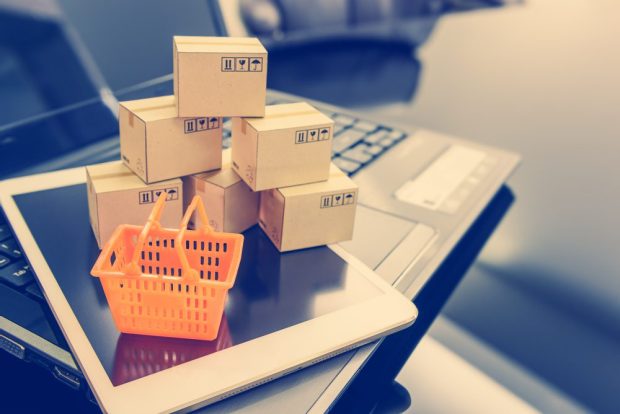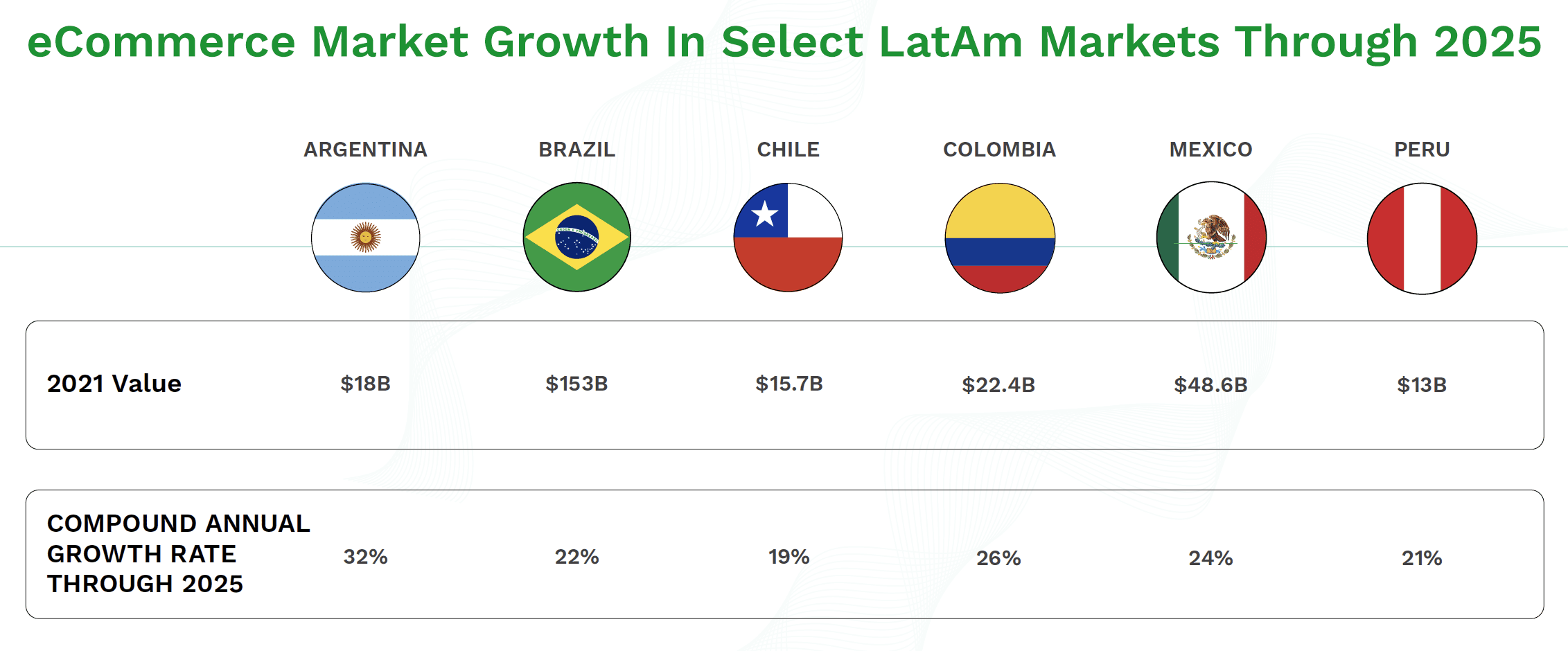PYMNTS Intelligence: Challenges and Opportunities For eCommerce in Latin America

Latin America is a burgeoning market for eCommerce, with a recent report pegging its value at $382 billion, representing a 35% growth from 2021. Some experts are even projecting a 25% growth in volume between 2021 and 2025, including B2C commerce, cross-border purchases, travel and digital goods, for a final total of more than $700 billion. This growth is due in large part to the rise of real-time payments across the region, as well as eCommerce marketplaces’ emergence as winners in the pandemic-fueled competition for a convenient shopping and payments experience.
Countries all across the region are embracing eCommerce, but several stand out for their high sales volume, strong growth and significant upward potential, including Brazil, Chile and Mexico. Several trends are driving this growth, including increased domestic and cross-border spending, greater market penetration of digital goods and an increased acceptance of digital payments.
Each LatAm country has its own eCommerce and payment trends that retailers need to be aware of.
Argentina, for instance, is notable for being hesitant when accepting new payment methods, with less than half the country’s consumers saying they would be willing to try a new payment technology such as digital wallets. Merchants in Mexico are taking advantage of the population’s preference for mobile, with 68% of retailers offering inventory information on their apps and 72% offering mobile ordering and delivery, more than any other country in the region.
Real-time payments are one of the major driving forces behind the eCommerce boom.
These payment systems are popping up all over Latin America and have been a clear success: Costa Rica’s Sinpe Móvil program, for example, saw $6.5 billion in transactions in 2021, four times what it experienced in 2020. Peru’s Yape system is no less successful, seeing 8 million users leveraging its debit card-based design. Brazil’s Pix system might be the biggest hit of all, however, clocking in at 100 million users in its first 10 months of operation, representing 60% of the country’s population. eCommerce in Latin America owes a huge fraction of its growth to the ubiquity and ease of use of these instant payment models.
Retailers need to be cognizant of the variable regulatory landscape across Latin America.
Each country’s regulations differ, so no business plan can be one-size-fits-all. Ecuador is taking its initial steps toward regulating FinTechs, for example, while Argentina and Chile have a much more established digital payments scene and are shaping their legislation accordingly. Argentina is implementing a digital payments promotion from its central bank, whereas Chile’s congress is establishing a regulatory framework to monitor crowdfunding, alternative transaction systems and credit advisory.